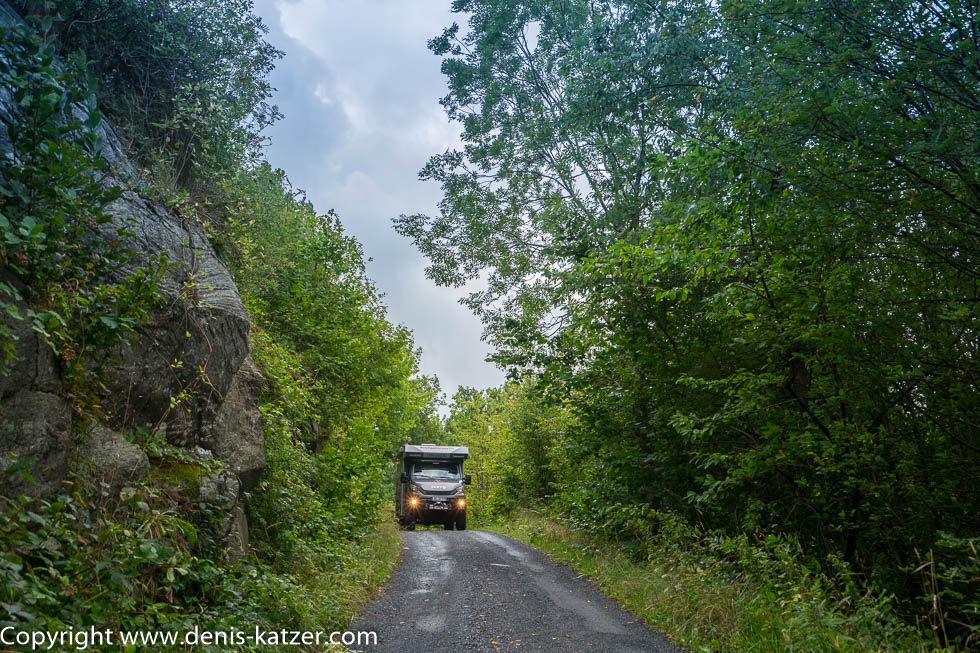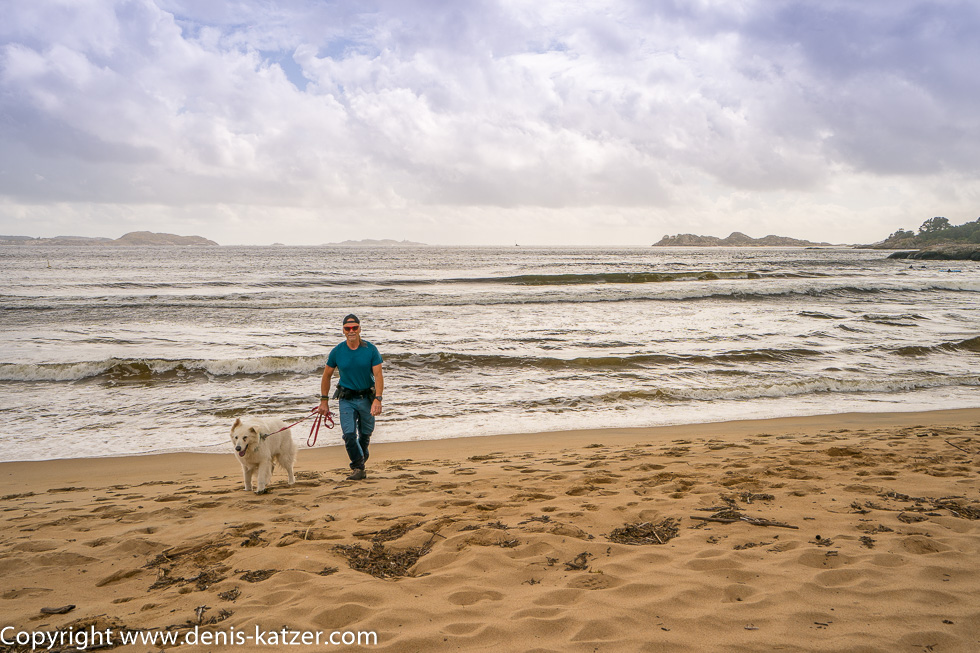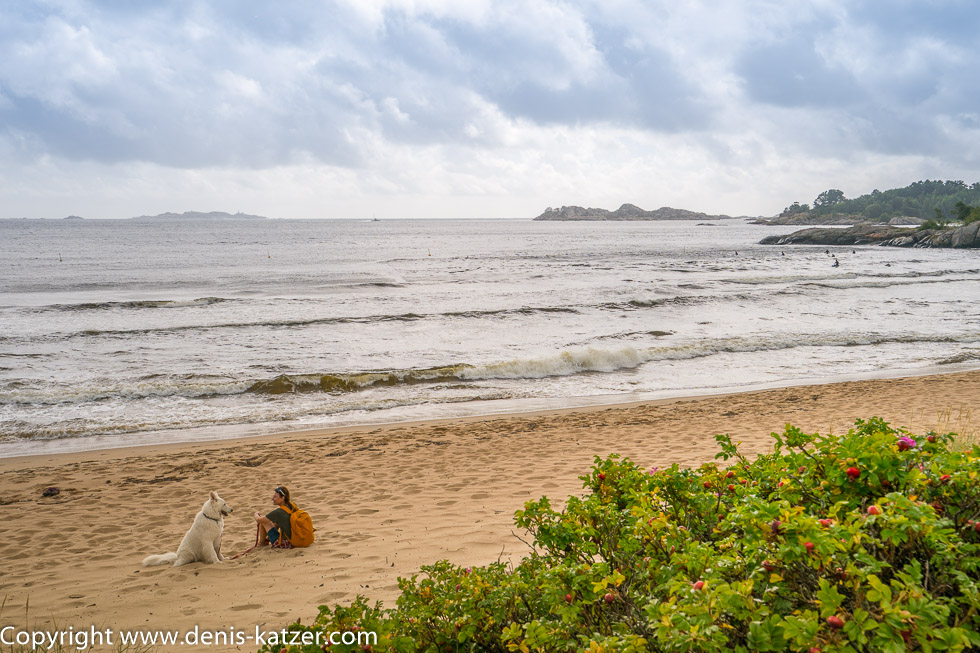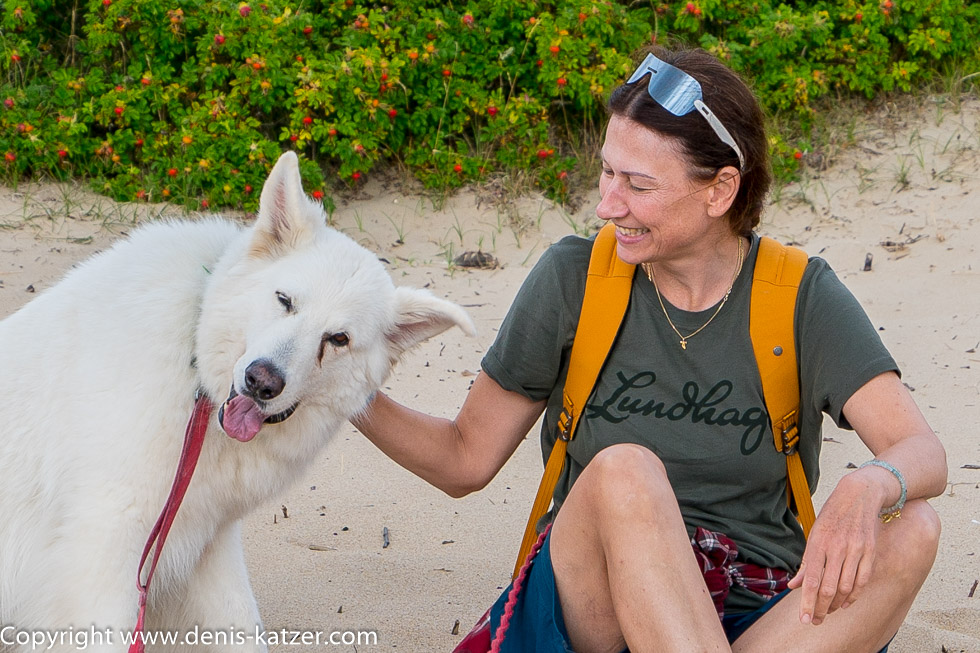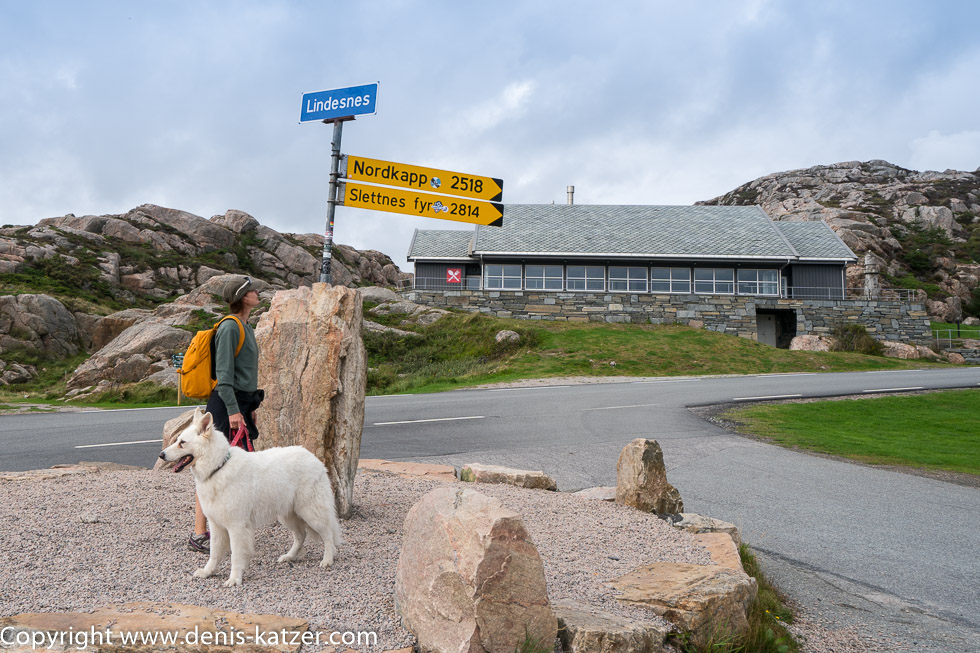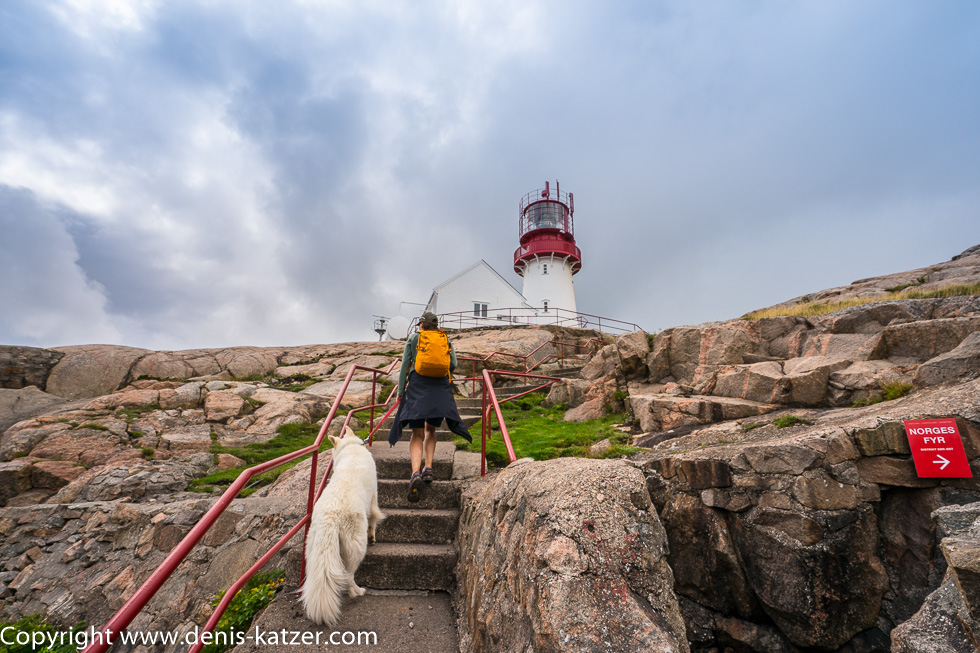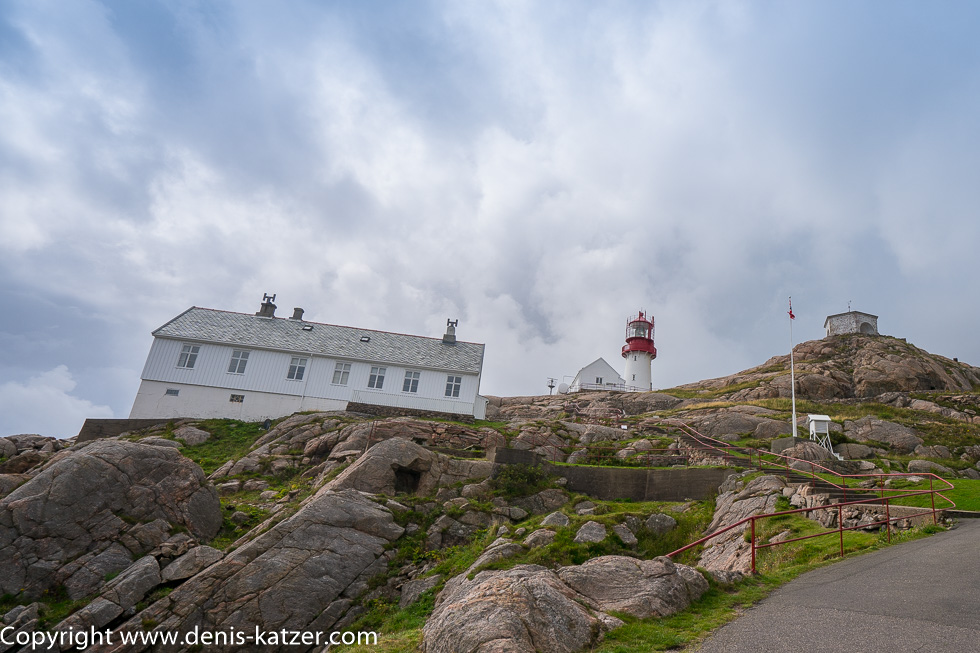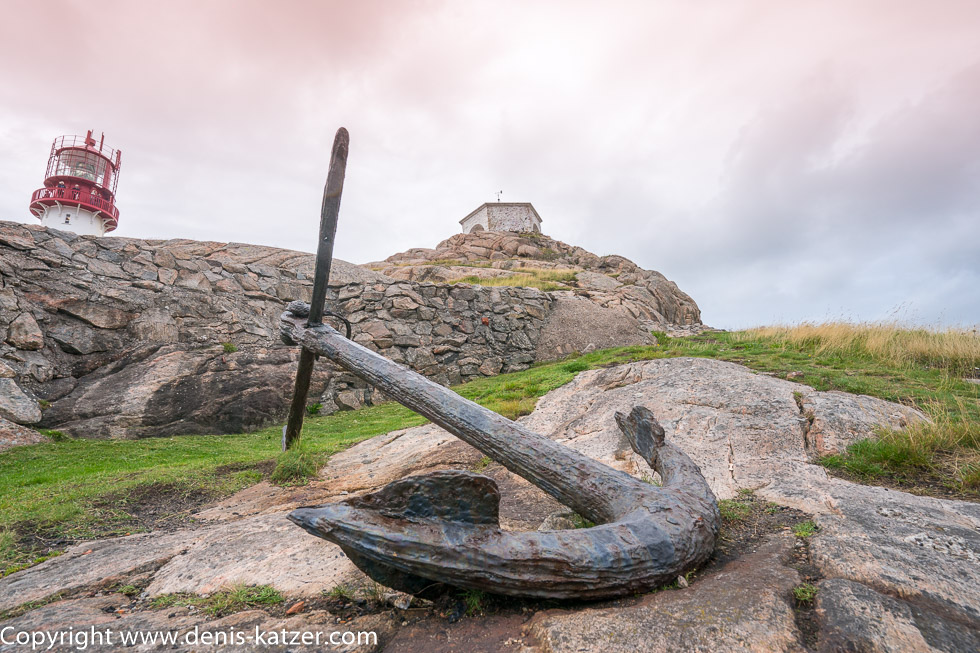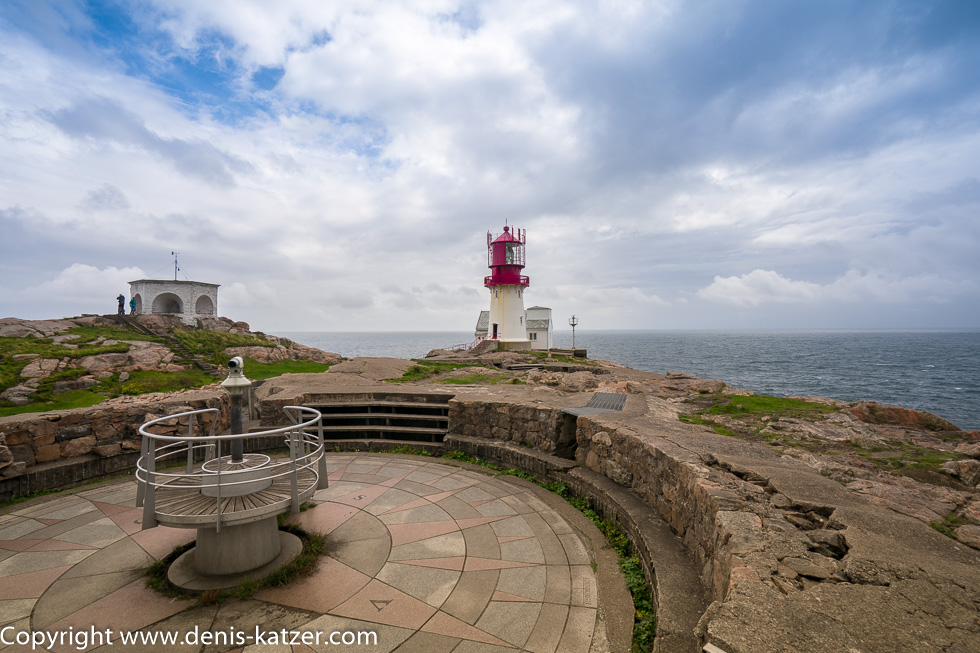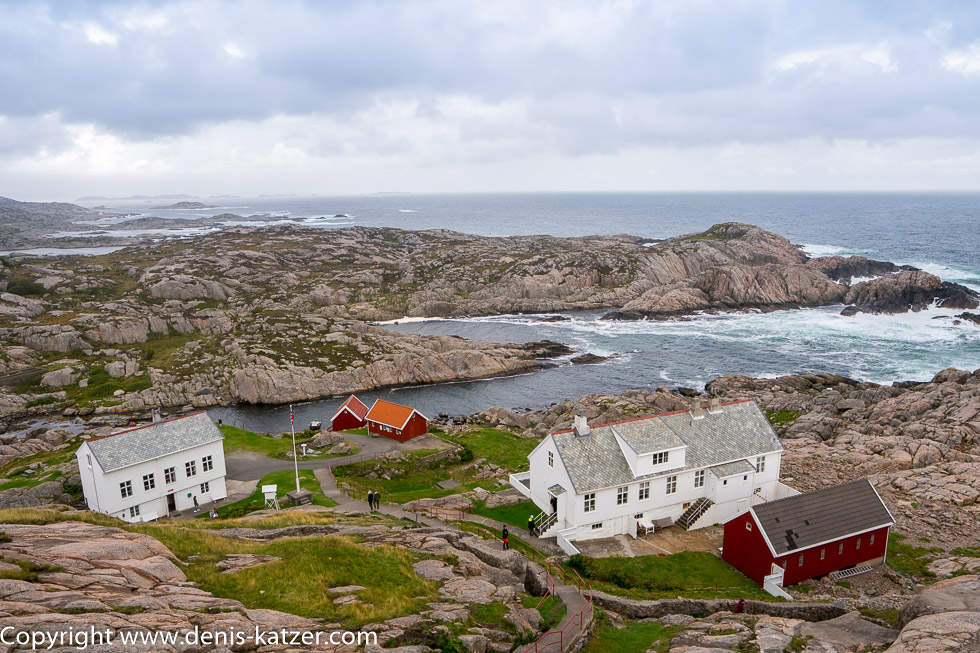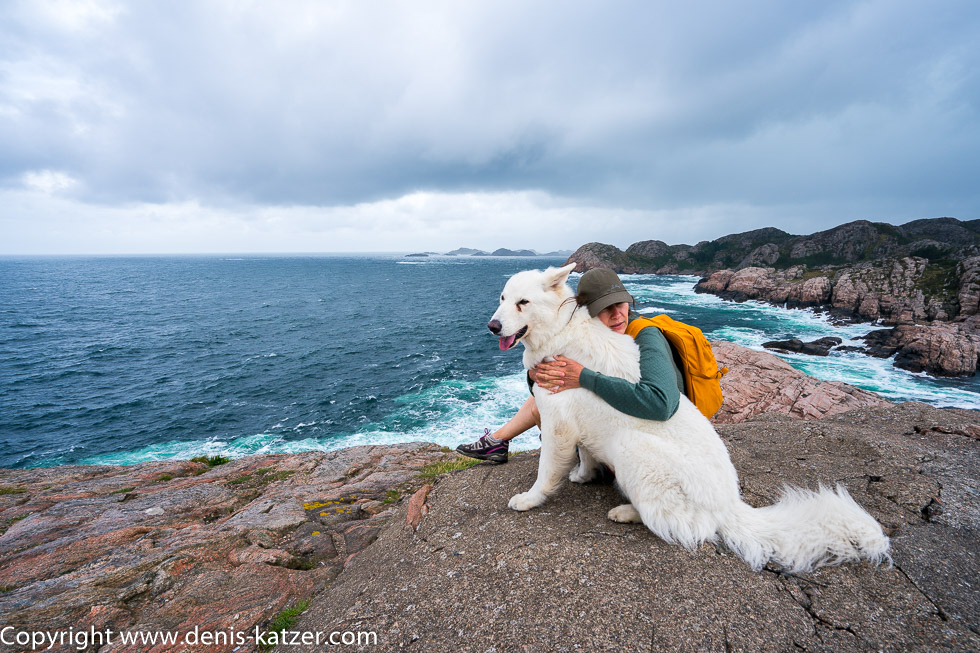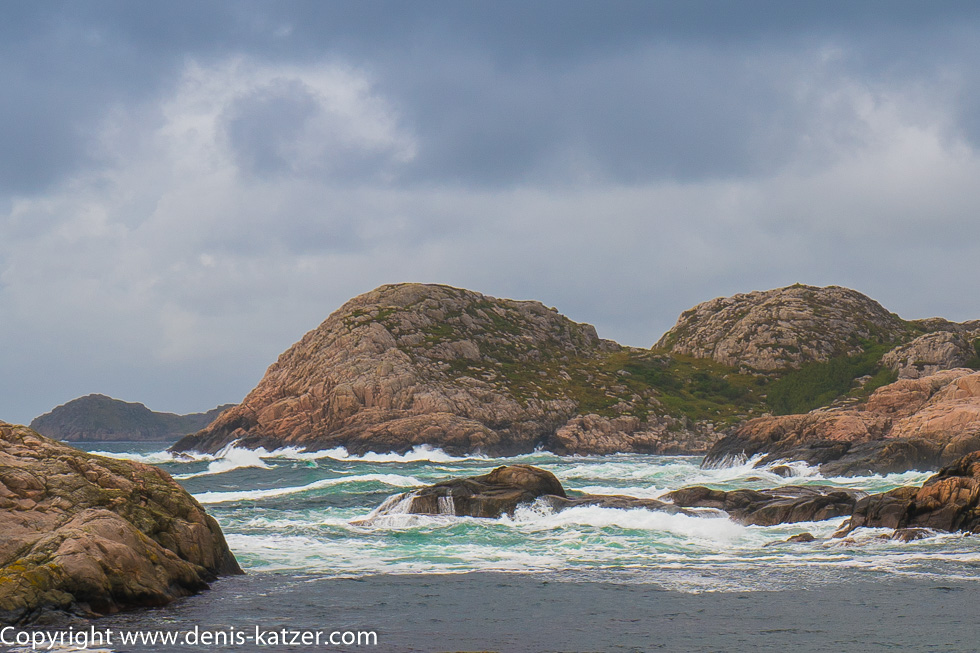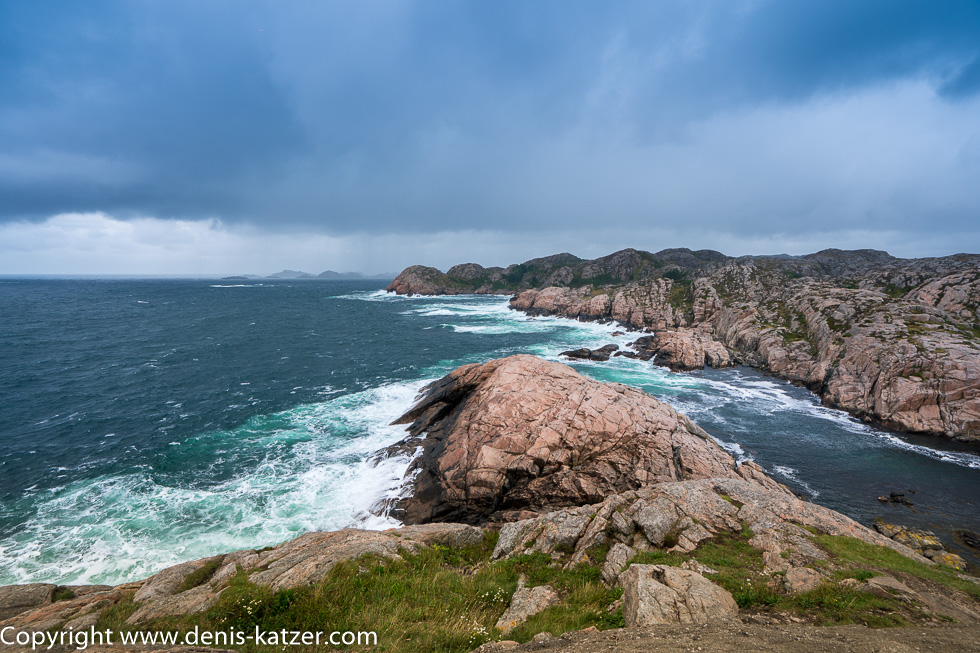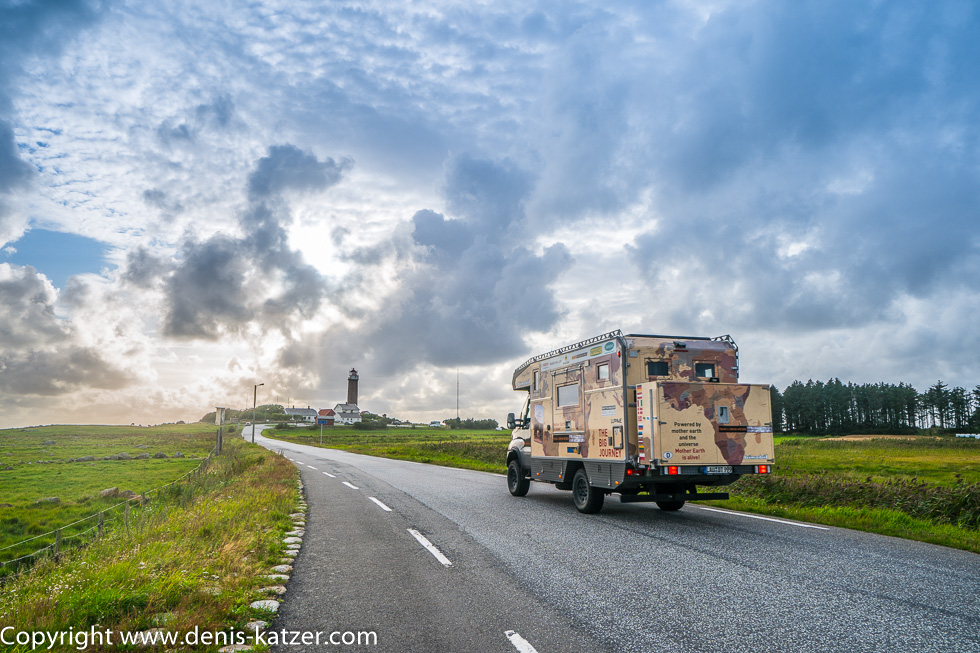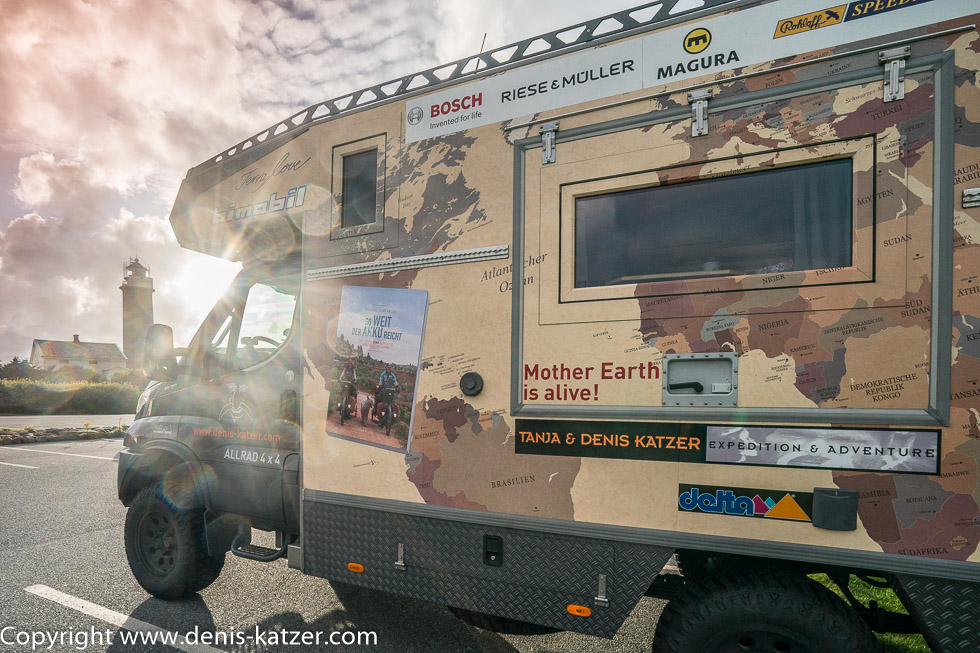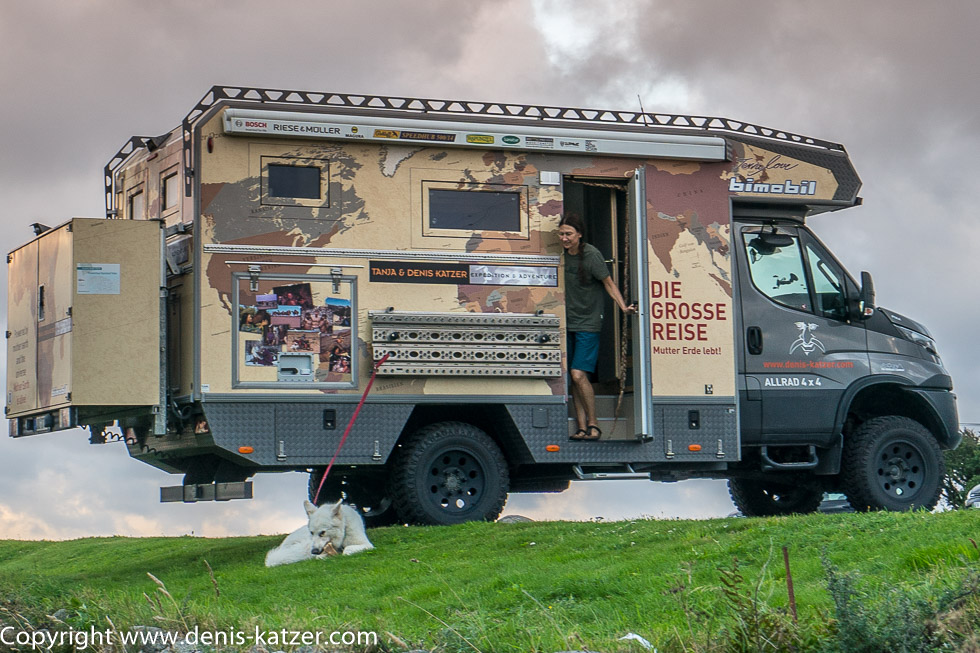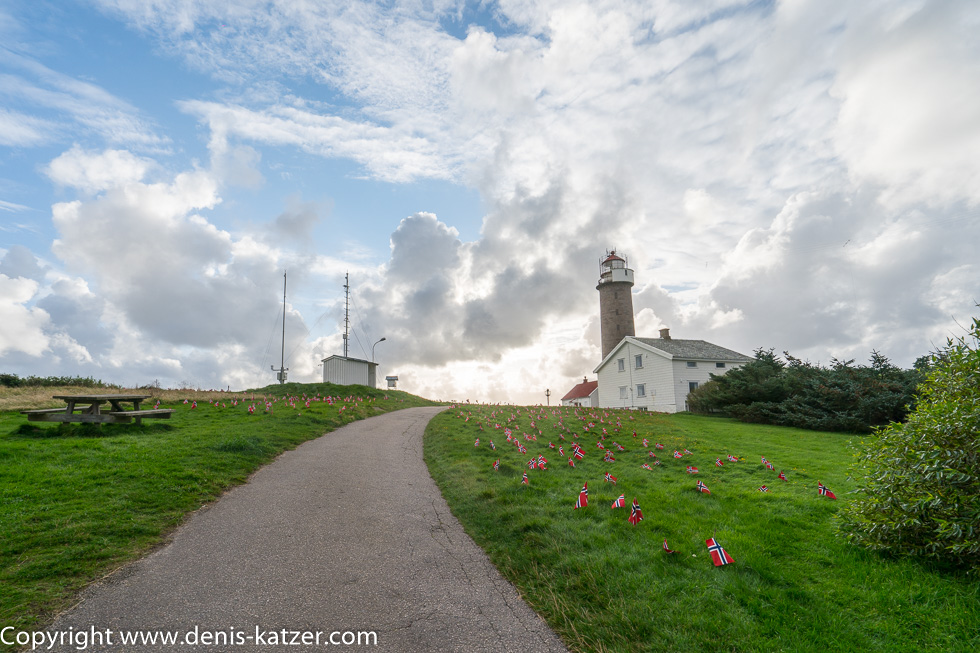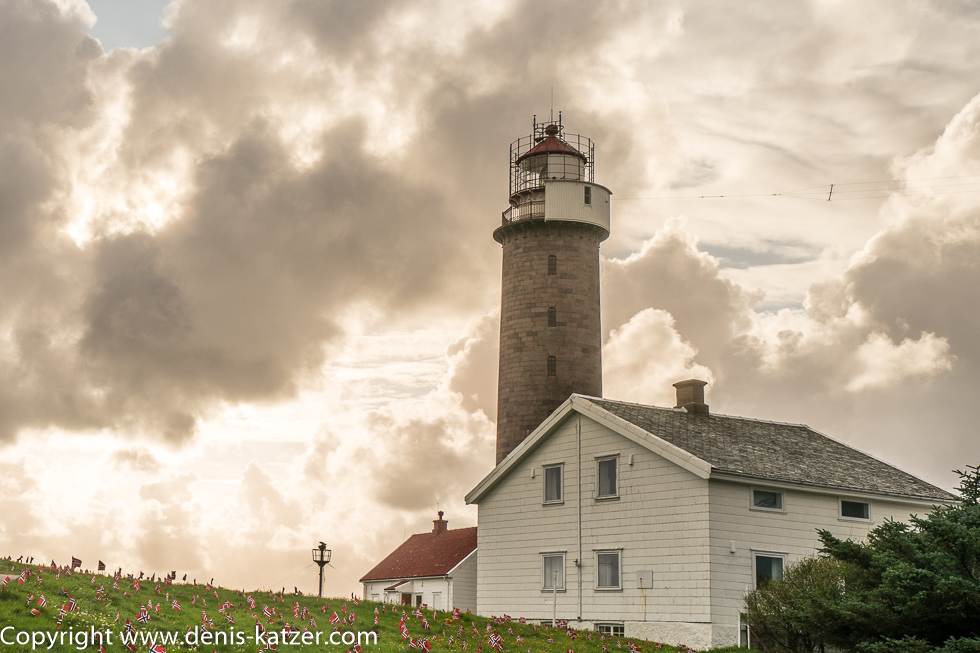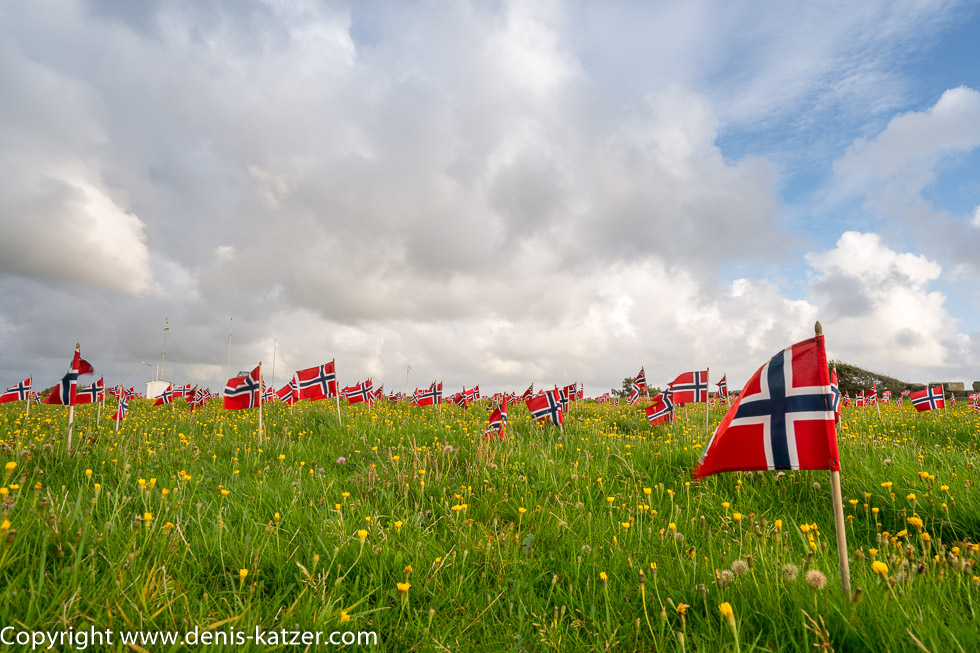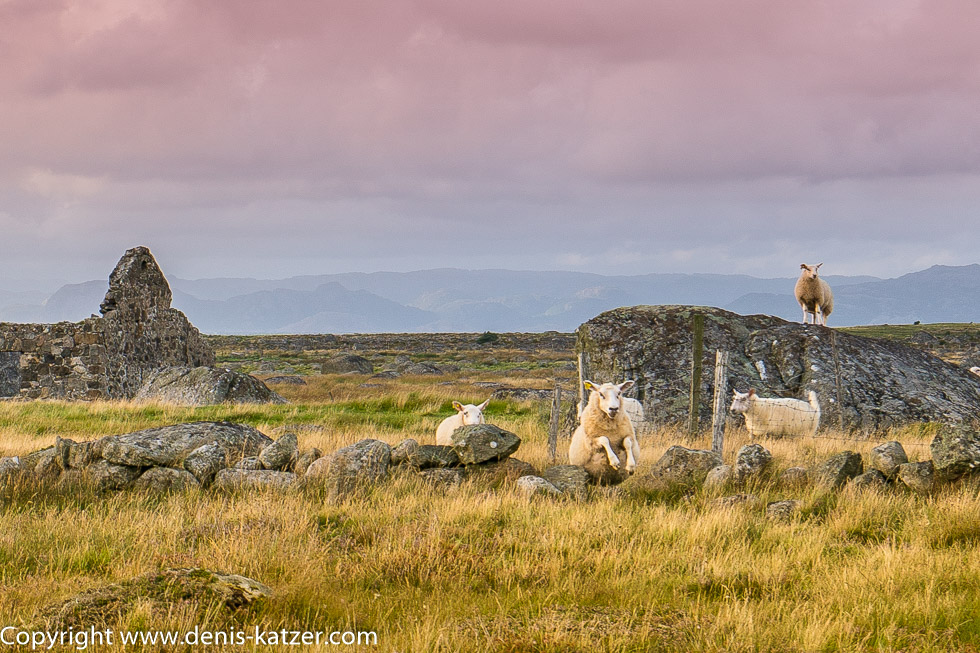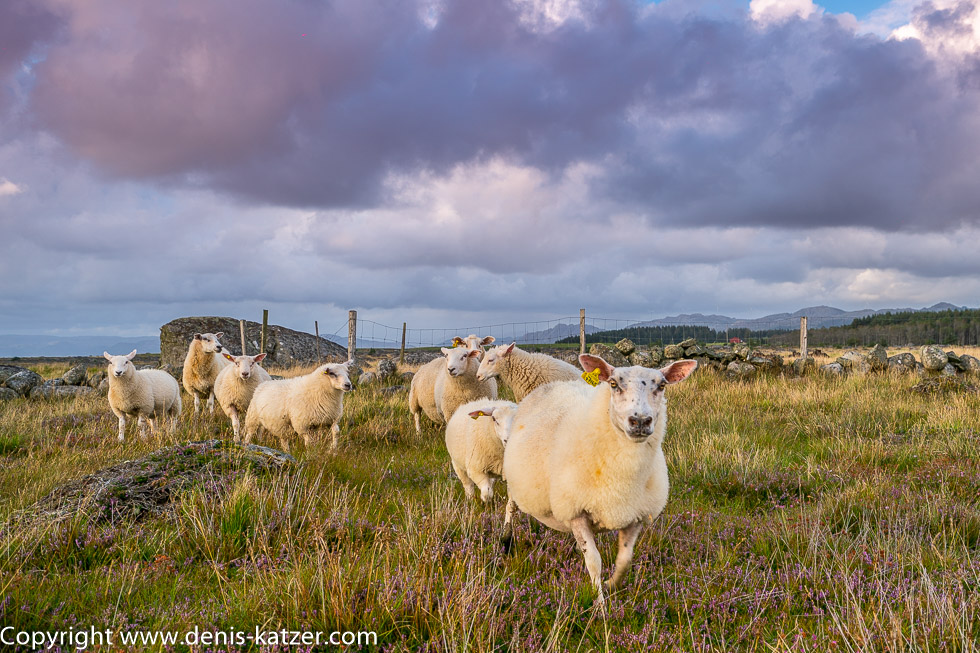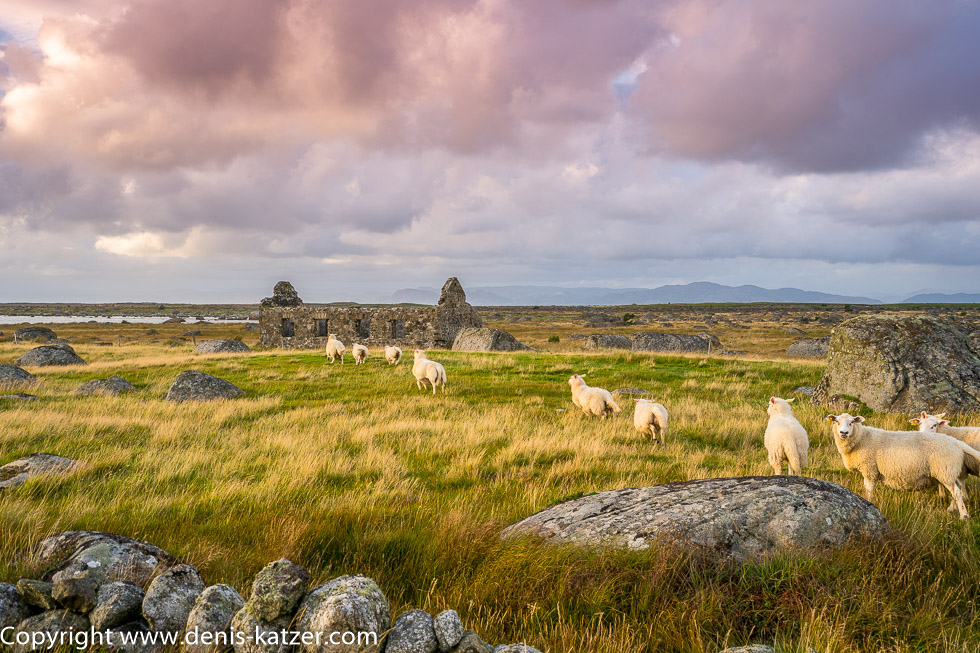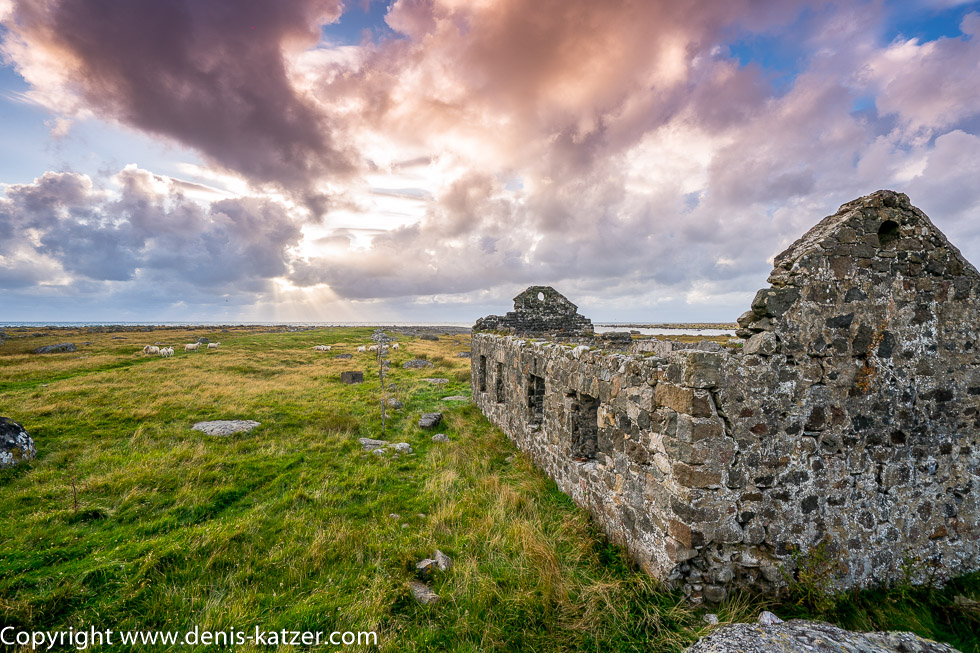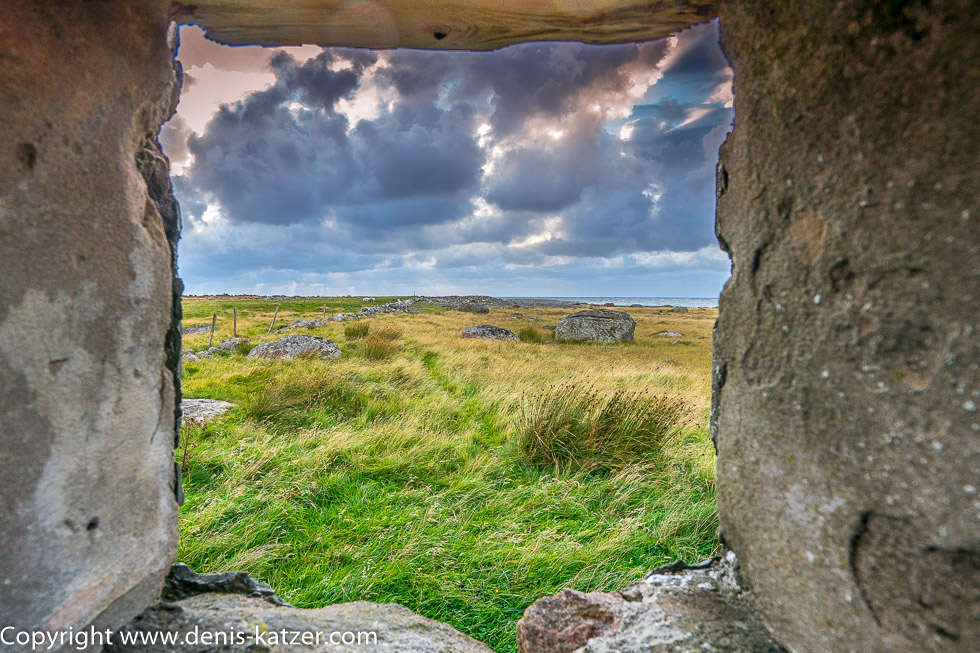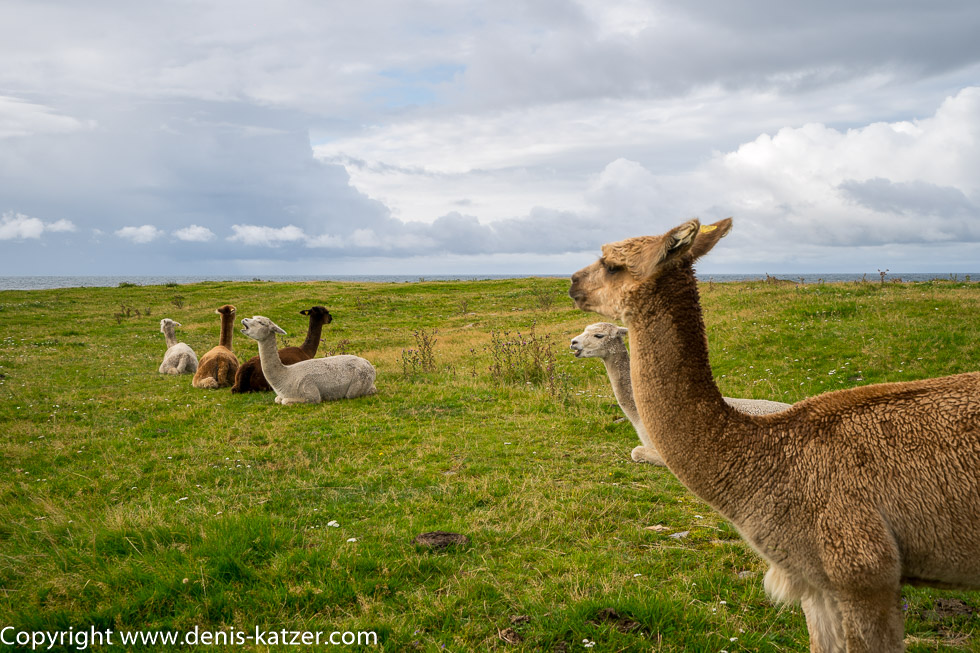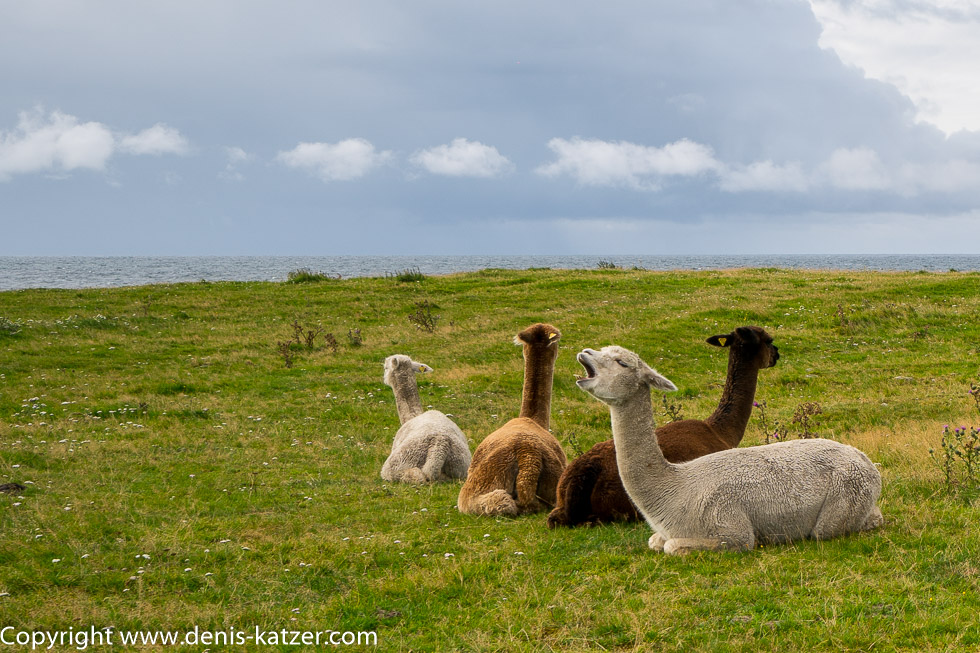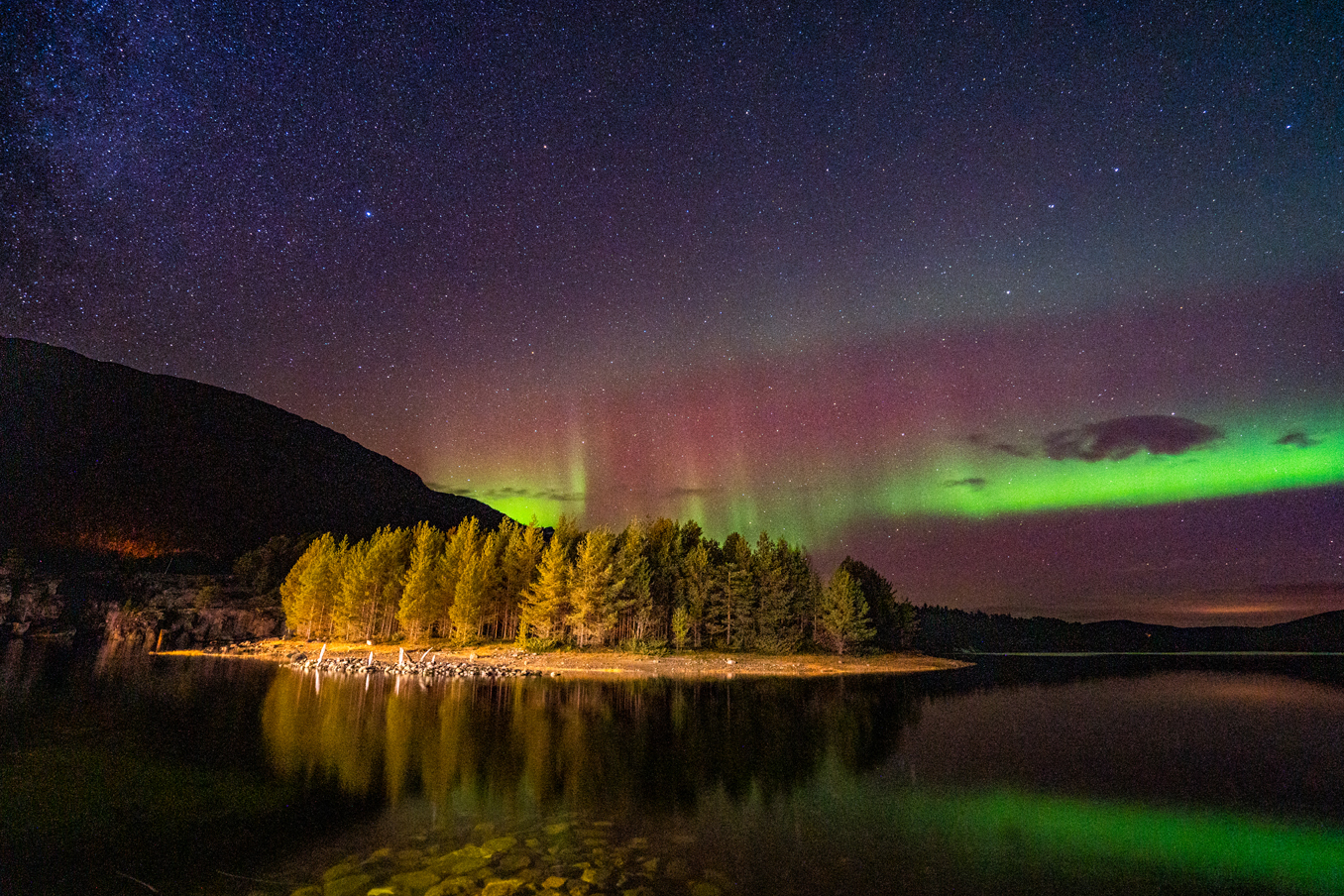
Flying fire extinguisher, lighthouses on a stormy coast and meeting Rebbeca and Arne
N 58°06.34.0'' E 006°34'09.5''
Date:
22.08.2020 until 23.08.2020
Day: 020 -021
Country:
Norway
Location:
Lista Fyr lighthouse
Daily kilometers:
200 km
Total kilometers:
2273 km
Travel time:
8 ½ hrs
Soil condition:
Asphalt
Bridge crossings:
10
Tunnel passages:
14
Sunrise:
06:07 to 06:09
Sunset:
21:06 to 21:03
Temperature day max:
15°
Night temperature min:
13°
Departure:
10:30 a.m.
Arrival time:
7:00 p.m.
(Photos of the diary entry can be found at the end of the text).
Click here for the podcast!
Link to the current itinerary
The narrow road winds its way through the coastal countryside. Time and again, the two-lane carriageway becomes one lane without warning. A particular danger if there is a sharp bend behind the narrowing that cannot be seen. Again and again I have to slow the Terra down to almost walking speed. Pammm! Suddenly there is a bang behind us. Wooouuuuuiii! Ajaci roars and is about to jump over the safety net in front of my steering wheel. I’m so frightened that I almost wrench the wheel and get on the irons to slow down our Terra. Tanja reacts in a flash and holds Ajaci back with her left arm. Wooouuuuuiii! Wooouuuuuiii! It continues to roar behind me. Driving at walking pace, we try to find out what has happened. “The fire extinguisher fell out of the cupboard and hit Ajaci’s seat,” says Tanja. “What, the fire extinguisher? How could that happen?” I ask. “I don’t know.” “There’s a passing place on the road,” I say, steering the Terra out of the narrow lane. Tanja has barely come to a standstill when she jumps out of the cab to see how the fire extinguisher could have taken on a life of its own in such a dangerous way. “The bathroom cabinet is open, but the lock is OK. I think the heavy fire extinguisher banged against the cupboard door during the serpentine drive and the door lock must have opened. Then it slipped out and flew onto the handle of the bathroom door, causing it to spring open and clear the way to Ajaci’s bed,” Tanja combines. “It must have been like that. Luckily the thing didn’t fall on Ajaci, the sink or the toilet. The sink would have been destroyed after such an impact and Ajaci would certainly have a few bruises under his white fur,” I say. “Yes, no matter where it fell, it would have smashed everything. It was a stupid idea to put the second fire extinguisher there. I thought it would have a good place there and wouldn’t keep getting in the way when you were loading and unloading the alcove.” “Right, then I’ll stow it back in the alcove,” I say.
After we have carefully checked and closed all the cupboards and doors, we drive on carefully. As soon as we’ve rolled off, Ajaci squeals like a god. It is so loud that I find it hard to concentrate on driving. “What’s wrong with him?” Let us wonder. “The shock is in his bones and he’s afraid that something will fall from above again at any moment,” I suspect. Then Tanja notices that Ajaci is sliding back and forth on his seat due to the constant curves. “Maybe that makes him uncomfortable?” Tanja ponders. “Do we have another sleeping mat that we could cut for him?” “Yes, there’s another mat in the back by the e-bikes in the box,” I reply, stop the Terra, get the mat and cut it to size. “There you go, my friend. Now you have a safe pilot’s seat again,” I say reassuringly and stroke his head. As soon as we’re back on the road, the squealing continues. I am almost a little desperate. Over the last 35,000 kilometers, our dog had felt very comfortable in his specially built space between us. He couldn’t wait to jump into his seat and now the same position seems to be a nightmare for him. “This must also be the case for people who are traumatized. Some recover from it, others never do. For some, time heals the psychological wounds,” I reflect.
An hour later, we take a break on Norway’s most famous, 800-meter-long sandy beach in the town of Mandal. Tanja walks barefoot over the fine, yellow sand. Ajaci would love to play his favorite game “catch the ball”. However, as leashes are compulsory in Norway at this time, he is not allowed to chase back and forth to catch the red ball. We stick to the compulsory leash because we have been told that the fines can be up to 2,000 euros if you let your dog run free. “If he were to bite or chase a sheep, he would most likely be shot. “There is no tolerance,” a Norwegian warned us.
By the time we reach the oldest and southernmost lighthouse on the Norwegian mainland, it is late afternoon. We park next to two large expedition motorhomes. “Our Terra looks really small in comparison,” says Tanja. “True, but I would never trade it in. With our height of 3.285 meters, we can get through most underpasses, and at 2.290 meters it’s not as wide as a truck, which makes driving on narrow roads much easier and safer. The huge tires alone, which these warhorses have, cost a fortune. There are countless reasons why I wouldn’t want to swap places with them,” I say on the way to the lighthouse legend, which was founded by the Danish King Fredrik III back in 1655. Back then, the tower was made of wood and the beacon consisted of 30 candles protected from the wind by a lead glass.
In strong winds, we stand on the lighthouse on Norway’s southern tip and look out over the choppy sea. “Maritime historians called this part of the sea, where the coastline meets the high seas, a classic shipwreck area,” I say, thinking of the people who sank out there with their sailing ships. “Considering that the weather is good now, I can imagine the massive breakers that will hit the land here if the weather is bad,” says Tanja, clutching her cap. Lindesnes fyr has been one of the most important landmarks between the North Sea and the Baltic Sea since the Middle Ages and was chosen as a destination by sailing ships that wanted to sail across the Skagerrak. We leave the lighthouse to walk around the plateau for a while. “Ohhh!” exclaims Tanja, as a gust of wind blows her cap off. She rolls over the rough rock and before she disappears forever in a crevice, she is able to catch her. Some signs warn people of strong gusts of wind, which in the past have blown one or two people off the cliff edge and into the water. “Not a nice death,” I think. Although we could have spent the night here in the parking lot, we are driven on.
The sun is about to retreat to the other hemisphere when we reach Lista fyr, which was built between 1834 and 1836. “Be quick, then we can take a photo of the lighthouse in the last light of day,” I urge Tanja to hurry. In front of the granite tower, someone has decorated the lawn with hundreds of small Norwegian flags that flutter in the evening light. This is not the first time we have come across an old fortress from the Second World War. In order to defend Norway’s 3,400-kilometer-long sea border, the Nazis set up naval and army coastal artillery detachments at the most important locations. These batteries were intended to protect the fjords and harbors from Allied invasion attempts and to secure the entrance to the Baltic Sea at the Skagerrak. “An unpleasant sight. I wonder why the Norwegians don’t dismantle these bunkers and facilities,” says Tanja. “There is a tourism industry for such military installations that can make money. Apart from that, I’ve heard that you can’t just blow away the massive reinforced concrete fortifications. They were bombproof, so to speak,” I reply.
“Look, there’s an old building there,” I say, pointing to a half-ruined stone house tucked away in the wide grassy landscape of the bird sanctuary. “You’re welcome to walk there. I’ll go back and prepare dinner for us in the meantime,” says Tanja and turns back. I, on the other hand, trudge through the tall grass and over boggy ground. A few electric fences to keep the sheep in their area block my way. Taking care not to miss a beat, I carefully climb over it. A few sheep spot me in front of the old fisherman’s hut without a roof. Apparently they are happy to see me, because they rush towards me euphorically. “I’m afraid I have nothing for you to eat,” I tell them, holding out my empty hands. “Well, let’s get out of here,” they seem to bleat and chase off at the same speed they came. The last rays of sunshine transform the rain clouds into an impressive play of colors. Purple, pale pink and various shades of blue are constantly being remixed by the wind. Above the sea, the setting ball of the sun hides behind a wall of cloud. Powerful rays flash through in a few places and hit the surface of the water like spearheads. Fascinated by the celestial spectacle, I stand on a rock, look out over the old fisherman’s house and inhale every minute. The rising wind bends the grass. I wander around the abandoned fishing hut, then I go inside. Sheep dung covers the ground. Small rooms welcome me. The cool sea breeze blows through the open holes, which were no doubt once closed by windows. It is not difficult to imagine how spartan people lived here. I glance at my watch. How long ago did Tanja go back? One hour? I leave the hut made of solid natural stone and hurry back, looking forward to dinner in the heated Terra Love.
It rained all night. In the morning, low-lying clouds drift over the mountains, on which the large rotors of many wind turbines turn. They seem to literally tear the clouds apart, but they are constantly trying to envelop the steel colossi again. Around 10:00 a.m., the visitors’ parking lot fills up with a few vehicles. Opposite us is a station wagon whose windows are fogged up. “Obviously someone else has spent the night here,” I say to Tanja, pointing to the vehicle in which someone is now moving. As I write these lines, I look out of the window from time to time. The young couple are sitting close together on the loading area of the station wagon, which has been converted into a bed, eating breakfast. “They really seem to like each other,” says Tanja. Next to the lighthouse is a fenced pasture where a few llamas are eating grass. “I’ll go out and take a few photos,” I say, grab the camera and leave the Terra. “You’re from Germany?” the young man in the estate car speaks to me in perfect German. “Yes, and why do you speak German so well?” “I was born in Germany, but have lived in Norway since my early childhood. My parents emigrated back then. I’ve just checked your web address on the expedition mobile. It’s amazing what you’ve seen on your travels and expeditions so far.” “Yes, we’ve seen and experienced a lot in the last few decades,” I reply, delighted that someone has registered the web address printed on the Terra Love and gone straight online. “And you’re spending your vacation in your own country?” I ask. “We actually wanted to go to Germany this year, then Corona came along. For me, quarantine would not be a problem after returning to Norway. I can work from home, but my wife Rebecca is a nurse, so quarantine wouldn’t be good for her. That’s why we decided to go on vacation at home.” We talk for a while about Norway and the world, then I say goodbye to Arne and his wife Rebecca to get my llama pictures in the box.
In the evening, there’s an unexpected knock on our door. “Hello, hope we’re not disturbing you?” Arne and Rebecca greet us. “I thought you left hours ago?” I ask in surprise. “We are, we had the spontaneous idea of inviting you to dinner with us and we wanted to do it in person. That’s the reason why we went back,” they both say with a laugh. “That’s really nice of you,” Tanja replies. “We would be very pleased if you would visit us on the way north. You’re passing through the city of Bergen, aren’t you?” “Hm, we’ve already been to Bergen twice, but who knows, if time permits, we’ll let you know. In any case, thank you for the invitation,” I thank her as Rebecca suddenly drops to her knees and sits down on the stairs of the Terra. “Are you not feeling well?” asks Tanja worriedly. “I’m just a little dizzy.” “She’s pregnant,” explains Arne. “Oh, congratulations,” says Tanja. “Would you like a glass of water? Or maybe you want to come in?” “No, no, I’ll be fine.” We chat for a while, then the newlyweds say goodbye to us. “Hope to see you in Bergen!” they shout. “Definitely!” answers Tanja…
